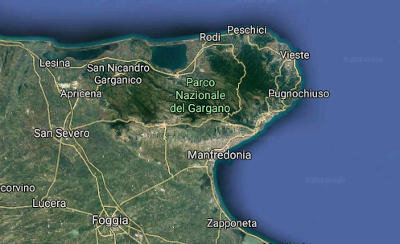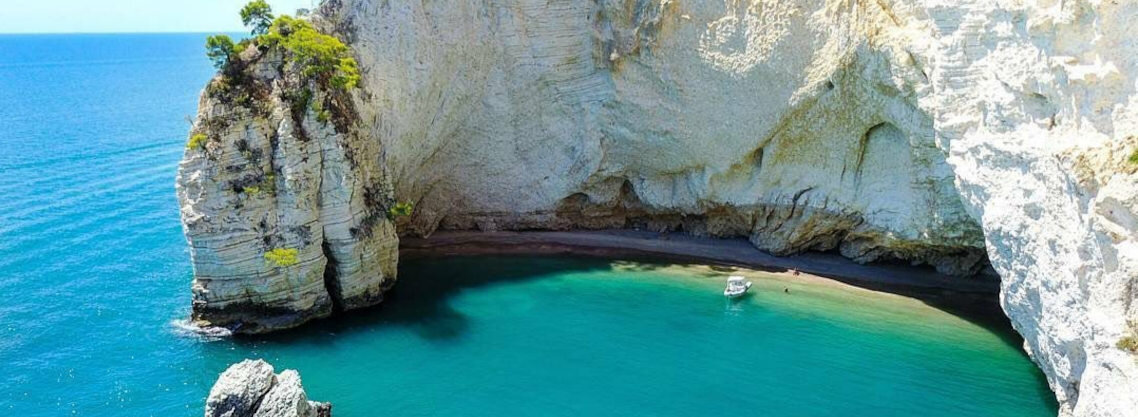The perfect combination of nature and faith. Traveling along the coast road from Peschici to Vieste, up to Mattinata, you can admire the breathtaking coastline dotted with inlets and spectacular caves, with golden beaches bathed by a crystal-clear sea. The Gargano National Park and the Umbra Forest are true green lungs of pure air and emotions. 5 km from the coast, the Tremiti Islands with their colorful seabeds offer unforgettable diving experiences. And then nature gives way to Faith at San Giovanni Rotondo and at the Sanctuary of San Michele in Monte Sant’Angelo, a UNESCO World Heritage Site, places of pilgrimage for the faithful of Padre Pio. The Gargano is made up of rocks formed in a marine environment and later emerged because they were involved in Plate Tectonics, the same process that led to the formation of the Apennines. The first significant uplift of the Gargano seems to have begun in the Miocene (about 25 million years ago) and continued in alternating phases in the Pliocene (6 million years ago), when this region began to take on its current morphology, simultaneously shaped by the action of atmospheric agents and karst processes. The uplift movements continued even in the Pleistocene.


The natural border between Gargano and the Tavoliere delle Puglie is marked by the Candelaro river. For this reason, the municipalities of Manfredonia, San Giovanni Rotondo, San Marco in Lamis, Rignano Garganico (to the south) and Apricena, Poggio Imperiale and Lesina (further north), while being part of the Gargano subregion, also have portions of territory that fall beyond the Gargano borders. In fact, in the case of Apricena, Poggio Imperiale, and Lesina, their territories are "straddling" the northern area of the Tavoliere delle Puglie and the Gargano area (but only partly belong to the Gargano, not entirely), while the other municipalities mentioned earlier have some portions of their territory "spilling over" into the Tavoliere area.



